Barbara Millicent Roberts, better known as Barbie, is one of the world’s most recognizable faces and toys. Created by businesswoman Ruth Handler and launched by Mattel in 1959, Barbie quickly became an inextricable part of the American cultural fabric, eventually inspiring everything from the hyper-feminine Barbiecore aesthetic to lively conversations about feminism, beauty ideals and commercialism.
It therefore follows that the iconic plastic doll and its myriad of accessories have also served as a powerful source of inspiration for artists, presenting itself as a muse, role model and symbol of pop culture.
Although Barbie has remained in the minds of collectors and the children who play with them, with the release of Greta Gerwig’s highly anticipated film Barbie, Barbie-mania has reached its climax. In honor of the renewed interest in all things Barbie, here are seven works that put her front and center.
Andy Warhol
Barbie, Portrait of BillyBoy* (1986)
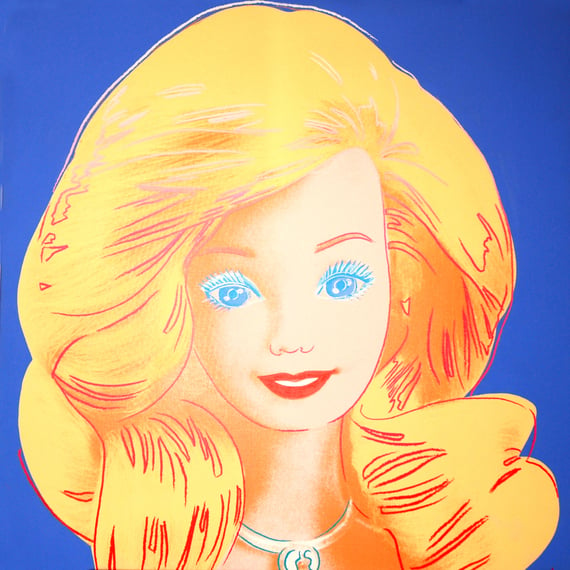
Andy Warhol, Barbie, Portrait of BillyBoy* (1986).
Andy Warhol was obsessed with fame, with many of his works featuring some of the most famous faces of the 20th century, from Marilyn Monroe and Jackie O. to Queen Elizabeth II and Muhammad Ali. It’s no surprise that in 1986 he turned to one of the most famous faces of all time: Barbie. Ironically, however, Barbie was not the portrait he originally wanted to create. Artist, socialite and fashion designer, BillyBoy* was a longtime friend and muse of the pop artist, and Warhol desperately wanted to create a portrait of him, which BillyBoy* continually refused. Finally, fed up with Warhol’s demands, BillyBoy* said to him: “If you really want to do my portrait, do a Barbie portrait because Barbie is me. This is what Warhol did, commemorating BillyBoy* through the title of the portrait.
David Levinthal
Untitled from the Barbie series (1997)
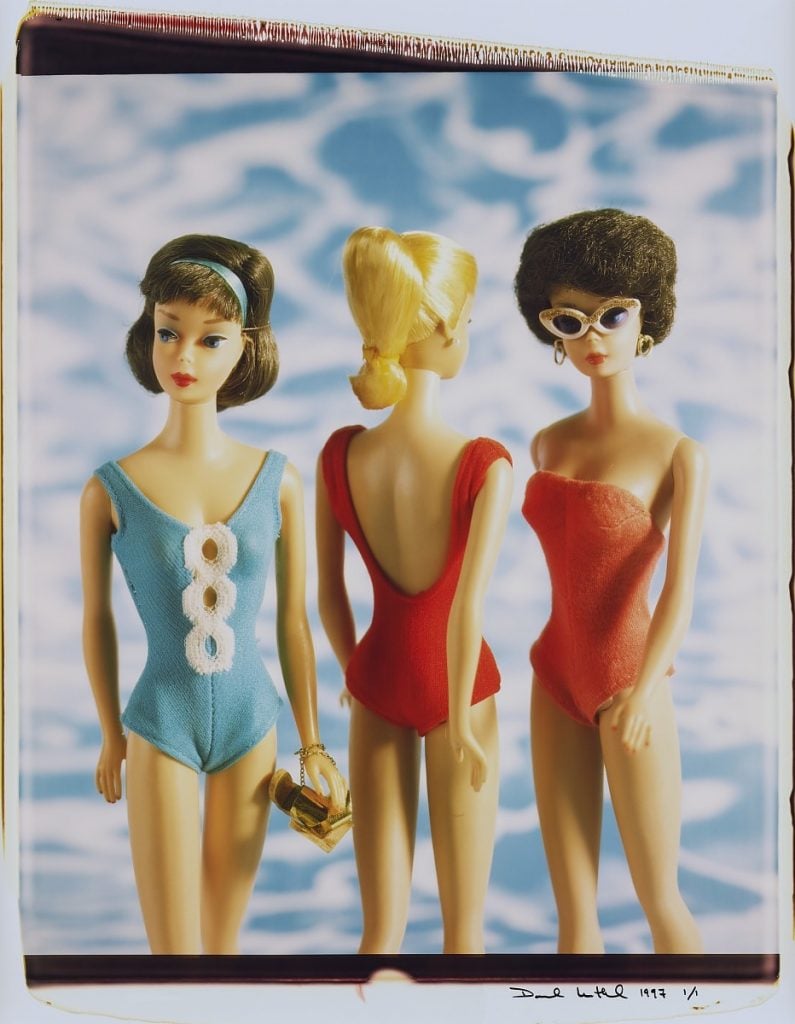
David Levinthal, Untitled from the Barbie series (1997) © 1997, David Levinthal. Collection of the Smithsonian American Art Museum, Washington, DC
American photographer David Levinthal has made a career photographing meticulously staged dolls and small toys, creating atmospheric vignettes that could be mistaken for film stills or real life. Through these dramatic scenes, Levinthal taps into everything from pop culture and historical events to racism and politics. In his “Barbie” series, the photographer uses the doll as a model, impeccably dressed and poses like a woman for an advertising campaign or in a fashion magazine. Through these images, Levinthal points to the way in which women were and are objectified and their bodies commercialized, particularly in the post-war period.
Sheila Pree Bright
Untitled 14 (2023)
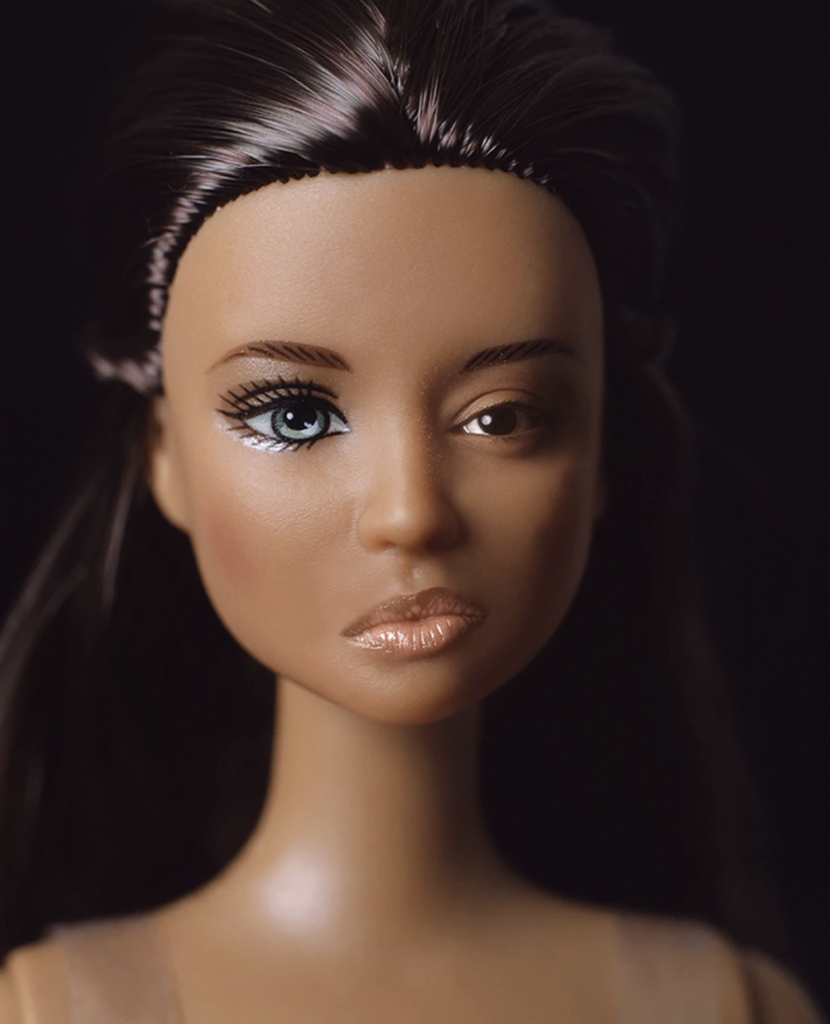
Sheila Pree Bright, Untitled 14 from “Plastic Body” (2003). Courtesy of the artist.
In photographer Sheila Pree Bright‘s series of images featuring Barbie dolls from his series “Plastic», the border between the human and the doll is strangely blurred. Fusing images of Barbies with real women, the artist visualizes the pressures of beauty standards, especially white beauty standards. In contemporary culture, perfection is an unattainable goal that must still be constantly pursued, leading to what the artist describes as the female body becoming more of a replica of a doll rather than the other way around. By carefully composing and fusing elements of Barbie with human women, Pree Bright explores the insidiousness of perfection and invites complex reflections on the impact and influence of mass media and cultural representations of women.
Beau Dunn
Barbie #3 (2012)
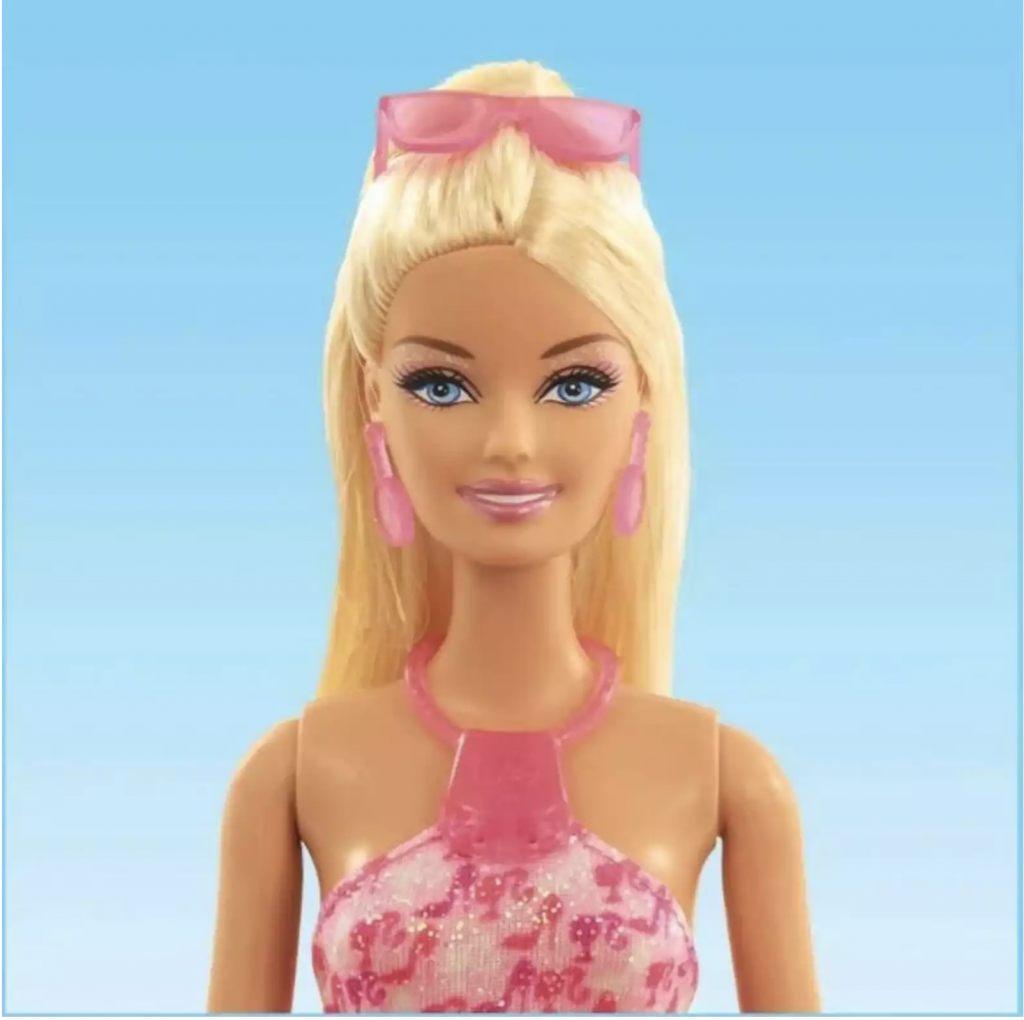
Beautiful Dun, Barbie #3 (2012). Courtesy of the artist.
Los Angeles-based actress, model and mixed-media artist Beau Dunn has a long-standing interest in Barbie both as a collectible and for the doll’s cultural symbolism. Her tongue-in-cheek photographic series “Plastic” showcases an array of ultra-feminine, impeccably presented Barbies – both vintage and contemporary – that have garnered a cult following (editions can be found in both Claudia Schiffer’s home and Kylie Jenner’s glam bedroom). The works create a dialogue between Barbie as a toy for small children and the pervasive social and cultural demands to look “perfect”. The photographs were born out of Dunn’s own experiences growing up in Los Angeles, where the pressure to have the perfect body and wardrobe is often heightened.
Sara Zaher
Barbie died for my sins (2019)
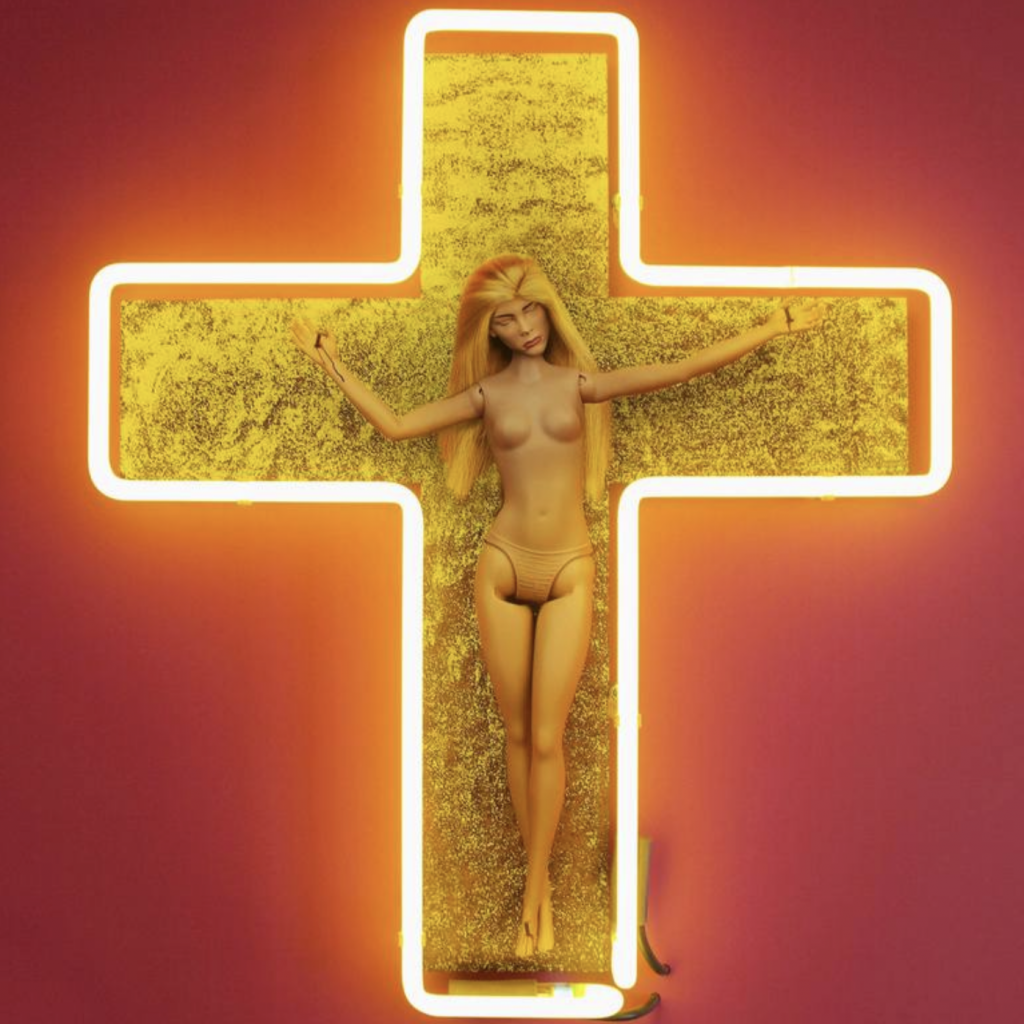
Sara Zaher, Barbie died for my sins (2019). Courtesy of the artist.
Originally from Cairo and currently based in New York, artist and designer Sara Zaher uses Barbie as a channel for discussing doll symbolism, as well as social, cultural and political issues. Says Zaher: “As for why I chose Barbie, my work centers on subverting familiar icons to create a new narrative. I wanted to attach a sense of relatability or humanity to him, as a character capable of sacrifice, redemption and reinvention. Where many have pointed out how Barbie embodies the objectification of women, Zaher sees Barbie as an opportunity to disrupt that association and create a new storyline, very Barbie. Using humor and wit, and sometimes irreverence or solemnity, Zaher’s reinterpretation of the iconic doll lends itself to larger conversations about the malleability of culture.
Sarah Williamson
ArtActivistBarbie (2018–)
ArtActivistBarbie has been active on Twitter for more than four years, appearing in museums and galleries — dressed in oh-so-Barbie outfits — with lollipop-wielding protest signs criticizing the male-dominated art world. The brainchild of Sarah Williamson, a senior lecturer at the University of Huddersfield in the UK, the project was initially an attempt to engage her students in social issues. The experiment was a success, and Williamson continued the project, which garnered 17,500 subscribers. Challenging the idea that Barbie is inherently a representation of unattainable and frivolous beauty standards, Williamson crafted a narrative in which Barbie is an activist – a transformation that parallels the feminist message she promotes through ArtActivistBarbie.
Andrea McCafferty
Barbie 1965 – The end of the case #2 (2019)
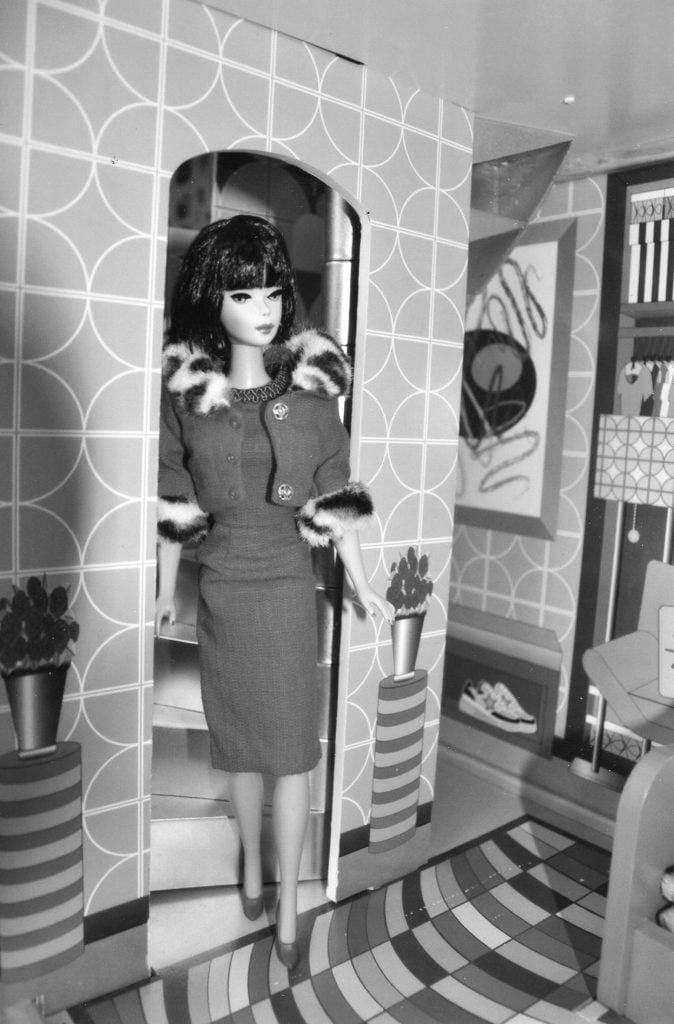
Andrea McCafferty, Barbie 1965 – The end of the case #2 (2019). Courtesy of The White Room Gallery.
Using her daughter’s retro dollhouse and a replica of the 1965 Barbie (the first to have bendable legs), Andrea McCafferty creates intriguing scenes and stories reminiscent of vintage film and television. In her “The End of the Affair” series, a title taken from a 1950s novel, the Barbie sporting a very chic bob and fur-trimmed coat could be seen as a still from a big drama. Although many of his Barbie-centric images are in color, in this series McCafferty chose black and white to create an Alfred Hitchcock-esque atmosphere. The carefully staged scenes and cinematic quality of the artists’ images evoke the work of Cindy Sherman’s “Untitled Film Stills,” but here, instead, the star is American icon Barbie.
Follow Artnet News on Facebook:
Want to stay one step ahead of the art world? Subscribe to our newsletter to receive breaking news, revealing interviews and incisive reviews that move the conversation forward.
